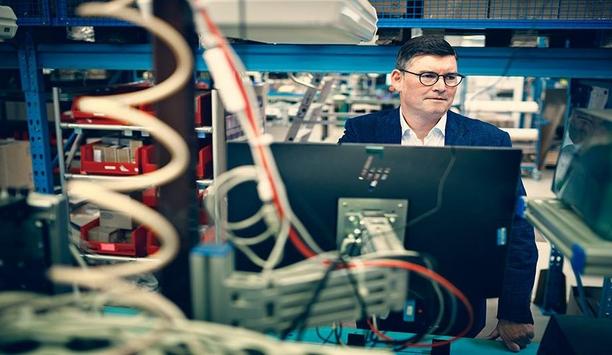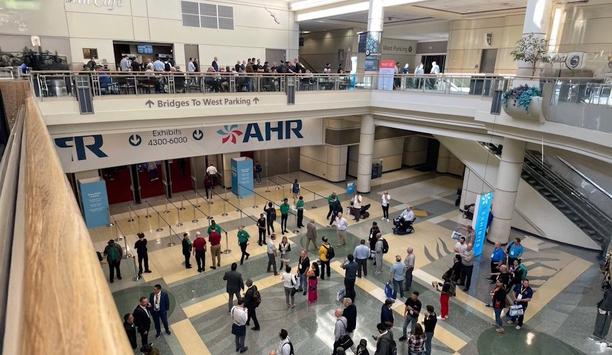Achieving carbon neutrality has, once more, become a business priority. Whilst COVID-19 distracted attention away from the drive towards Net Zero, green issues are once more back on the agenda and rising to the top of it.
Building specifications
The built environment accounts for around 28-40% of global emissions, so there is a collective ambition to start specifying buildings with as low a carbon footprint as possible.
This is particularly true of commercial office spaces where operational costs have remained traditionally high, requiring the need for continuous lighting, ventilation, and heating to maintain them, whether occupied or vacant.
Maximum safety levels in offices
Ensuring maximum safety levels within the office, ensuring employee health and wellbeing should not be compromised
Furthermore, whilst the pandemic is in retreat a concern persists with ensuring maximum safety levels within office interiors; ensuring employee health and wellbeing are not compromised.
There are also employee-side pressures, with many returning to a CBD office environment there’s a justified concern that the workspaces they’re returning to are fit-for-purpose, risk-free, and designed to help them get the most from their working day.
HVAC assessment
It’s a complex cocktail of new priorities and presents a sizeable challenge for employers and the design community alike.
Whilst there are several new considerations for the office fit-out of the here and now, one simple and effective way, whether new build or retrofit, is to assess the HVAC systems. Not only can this exercise help achieve a low-carbon outcome, but a healthier one too.
Mind your IAQs
Poor air quality has plagued office interiors for years, but the recent pandemic threw a spotlight on the issue and has encouraged a greater focus on achieving optimum IAQ to create a healthier, lower-risk working environment.
It pays to give IAQ serious consideration as the impact it can have on a workforce is significant.
Causes of poor IAQ
Poor IAQ within commercial buildings can foster a variety of different and negative health effects
Poor IAQ within commercial buildings can foster a variety of different and negative health effects, the most common of which is Sick Building Syndrome (SBS).
This relates to the name of a variety of symptoms caused when confined to a badly ventilated, indoor space for an extended period. The condition can range from prolonged headaches and irritating dry-itchy skin to rashes.
Impact and solution for Poor IAQ
That just scratches the surface. Poor IAQ is also scientifically proven to have a sharply negative impact on concentration and productivity, seriously affecting levels of quality, and quantity, of work delivered throughout the day.
The good news is a practical and scalable solution: natural ventilation.
Taking a Natural Approach
The increase in employee wellbeing, Natasha’s law, and a growing legal obligation to fulfill a duty of care to staff, to maintain a culture of good practice, and boost productivity are driving the need for a sustainable way of improving IAQ.
Furthermore, as highlighted above, companies across the UK are being encouraged to adopt a more sustainable approach to business, in line with global Net Zero 2050 targets.
Sustainable option
An eminently sustainable option, Natural ventilation uses programmable smart technology to automate systems
Essentially, Natural ventilation is the low-impact, high-performance future of air conditioning and ventilation and a proven cure for poor IAQ. The provision of natural, as opposed to recycled, air improves working conditions inside commercial spaces such as offices, educational buildings, and healthcare facilities.
An eminently sustainable option, it uses programmable smart technology to automate systems to guarantee the minimum amount of energy is used.
AI-supported passive system
The implementation of this type of AI-supported passive system takes advantage of natural air currents to ventilate the airflow indoors, while also helping to regulate the interior temperature.
Introducing fresh air indoors while releasing the stale air that’s been stored inside a building increases comfort. Specified alongside a fabric first structure, natural ventilation can also deliver better thermal performance without mechanical assistance.
Greater Degree of Control
Whilst mechanical ventilation used to be regarded as more controllable, it’s now rightly seen as wasting massive amounts of energy and expending significant levels of CO2.
The evolution of natural systems over the past decade, as well as a rapid advancement of sensory technology to support actuators, has helped to shift the balance.
Optimum building performance
When programmed appropriately these sensor-smart controllers guarantee a comfortable indoor environment
The shift is brought by connecting advanced building management systems to window automation. Ideally, the BMS system uses a weather station to constantly communicate with room sensors, relaying information back to control the best time and positons to vent during the day.
When programmed appropriately these sensor-smart controllers guarantees a comfortable indoor environment is constantly nurtured, thus eliminating the need for constant manual maintenance. By utilizing network-based controllers, the overall makeup of the building will perform at an optimum level.
Working in Harmony
Natural ventilation works best when considered in conjunction with other design elements and approaches. Treating sustainability holistically is by far the best option and incorporating other green components, fixture and finishes are advisable.
For example, using materials manufactured to a circular approach or seeing what existing fixtures can be given a new lease of life.
Biophilic features
Of course, you should limit the amount of VOC potential too, otherwise, all the good work of a natural ventilation system will be compromised.
Biophilic features are also a good idea, promoting better air quality with plant life planned throughout the office floorplan, imbuing these commercial spaces with a natural atmosphere, and can support stress reduction and mental restoration.
Returning to Work
Employees want a hybrid working model and an office that mimics the flexibility and comfort of working from home
The UK government is trying to encourage a workforce now accustomed to working at home to return to the office, with mixed results. However, a changing attitude amongst staff has not been lost on employers who are now taking a more considerate approach to the design and layout of the office.
More and more, employees want a hybrid working model, and this is an office space that mimics some of the security, flexibility, and comfort of working from home. Of course, business is business, so this has to be carefully balanced and, whilst ensuring a low-stress environment, ensuring maximum focus is key.
healthy and productive working environment
Beyond the refreshed floorplan and ergonomic furniture, Natural Ventilation can play a crucial role in helping to deliver a healthy and productive working environment.
These systems reduce the potential for SBS, through the guarantee of plenty of fresh air circulating throughout the building, lowering the potential for adverse health effects and stress-related sick leave.
higher energy efficiency
Natural ventilation can achieve lower emissions and healthier indoor environments
Ultimately, specifying natural ventilation systems will deliver numerous benefits, far beyond ensuring the best possible IAQ and the immediate reduction of operational costs.
Backed by the right supporting technology and correct programming, within a recognized Building Management Software platform, it can achieve lower emissions, higher energy efficiency, and healthier indoor environments.
Making a Healthier Choice
An affordable and sustainable option for now and the future, it can help encourage workers to return to the office, knowing their health and well-being are at the forefront of their employer’s mind.
Reassuring, natural ventilation is enabling us all to master the ability to breathe freely and easily.






















